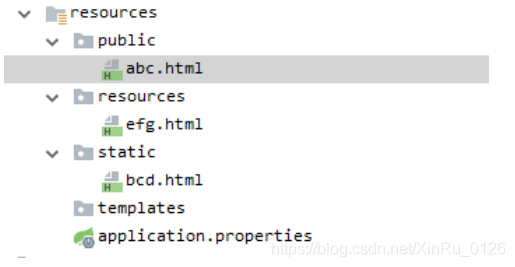詳解Java如何進(jìn)行Base64的編碼(Encode)與解碼(Decode)
關(guān)于base64編碼Encode和Decode編碼的幾種方式
Base64是一種能將任意Binary資料用64種字元組合成字串的方法,而這個(gè)Binary資料和字串資料彼此之間是可以互相轉(zhuǎn)換的,十分方便。在實(shí)際應(yīng)用上,Base64除了能將Binary資料可視化之外,也常用來表示字串加密過后的內(nèi)容。如果要使用Java 程式語言來實(shí)作Base64的編碼與解碼功能,可以參考本篇文章的作法。
早期作法
早期在Java上做Base64的編碼與解碼,會(huì)使用到JDK里sun.misc套件下的BASE64Encoder和BASE64Decoder這兩個(gè)類別,用法如下:
final BASE64Encoder encoder = new BASE64Encoder();final BASE64Decoder decoder = new BASE64Decoder();final String text = '字串文字';final byte[] textByte = text.getBytes('UTF-8');//編碼final String encodedText = encoder.encode(textByte);System.out.println(encodedText);//解碼System.out.println(new String(decoder.decodeBuffer(encodedText), 'UTF-8'));final BASE64Encoder encoder = new BASE64Encoder();final BASE64Decoder decoder = new BASE64Decoder();final String text = '字串文字';final byte[] textByte = text.getBytes('UTF-8');//編碼final String encodedText = encoder.encode(textByte);System.out.println(encodedText);//解碼System.out.println(new String(decoder.decodeBuffer(encodedText), 'UTF-8'));
從以上程式可以發(fā)現(xiàn),在Java用Base64一點(diǎn)都不難,不用幾行程式碼就解決了!只是這個(gè)sun.mis c套件所提供的Base64功能,編碼和解碼的效率并不太好,而且在以后的Java版本可能就不被支援了,完全不建議使用。
Apache Commons Codec作法
Apache Commons Codec有提供Base64的編碼與解碼功能,會(huì)使用到org.apache.commons.codec.binary套件下的Base64類別,用法如下:
final Base64 base64 = new Base64();final String text = '字串文字';final byte[] textByte = text.getBytes('UTF-8');//編碼final String encodedText = base64.encodeToString(textByte);System.out.println(encodedText);//解碼System.out.println(new String(base64.decode(encodedText), 'UTF-8'));final Base64 base64 = new Base64();final String text = '字串文字';final byte[] textByte = text.getBytes('UTF-8');//編碼final String encodedText = base64.encodeToString(textByte);System.out.println(encodedText);//解碼System.out.println(new String(base64.decode(encodedText), 'UTF-8'));
以上的程式碼看起來又比早期用sun.mis c套件還要更精簡,效能實(shí)際執(zhí)行起來也快了不少。缺點(diǎn)是需要引用Apache Commons Codec,很麻煩。
Java 8之后的作法
Java 8的java.util套件中,新增了Base64的類別,可以用來處理Base64的編碼與解碼,用法如下:
final Base64.Decoder decoder = Base64.getDecoder();final Base64.Encoder encoder = Base64.getEncoder();final String text = '字串文字';final byte[] textByte = text.getBytes('UTF-8');//編碼final String encodedText = encoder.encodeToString(textByte);System.out.println(encodedText);//解碼System.out.println(new String(decoder.decode(encodedText), 'UTF-8'));final Base64.Decoder decoder = Base64.getDecoder();final Base64.Encoder encoder = Base64.getEncoder();final String text = '字串文字';final byte[] textByte = text.getBytes('UTF-8');//編碼final String encodedText = encoder.encodeToString(textByte);System.out.println(encodedText);//解碼System.out.println(new String(decoder.decode(encodedText), 'UTF-8'));
與sun.mis c套件和Apache Commons Codec所提供的Base64編解碼器來比較的話,Java 8提供的Base64擁有更好的效能。實(shí)際測(cè)試編碼與解碼速度的話,Java 8提供的Base64,要比sun.mis c套件提供的還要快至少11倍,比Apache Commons Codec提供的還要快至少3倍。因此在Java上若要使用Base64,這個(gè)Java 8底下的java .util套件所提供的Base64類別絕對(duì)是首選!
到此這篇關(guān)于詳解Java如何進(jìn)行Base64的編碼(Encode)與解碼(Decode)的文章就介紹到這了,更多相關(guān)Java Base64編碼與解碼內(nèi)容請(qǐng)搜索好吧啦網(wǎng)以前的文章或繼續(xù)瀏覽下面的相關(guān)文章希望大家以后多多支持好吧啦網(wǎng)!
相關(guān)文章:
1. vue跳轉(zhuǎn)頁面常用的幾種方法匯總2. XML 非法字符(轉(zhuǎn)義字符)3. CSS3實(shí)例分享之多重背景的實(shí)現(xiàn)(Multiple backgrounds)4. XML入門的常見問題(三)5. 不要在HTML中濫用div6. ASP動(dòng)態(tài)include文件7. 父div高度不能自適應(yīng)子div高度的解決方案8. asp createTextFile生成文本文件支持utf89. Jquery使用原生AJAX方法請(qǐng)求數(shù)據(jù)10. el-input無法輸入的問題和表單驗(yàn)證失敗問題解決

 網(wǎng)公網(wǎng)安備
網(wǎng)公網(wǎng)安備